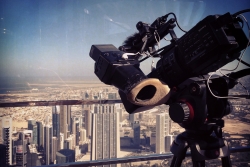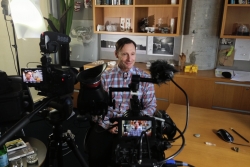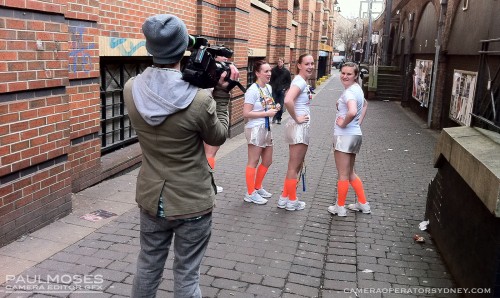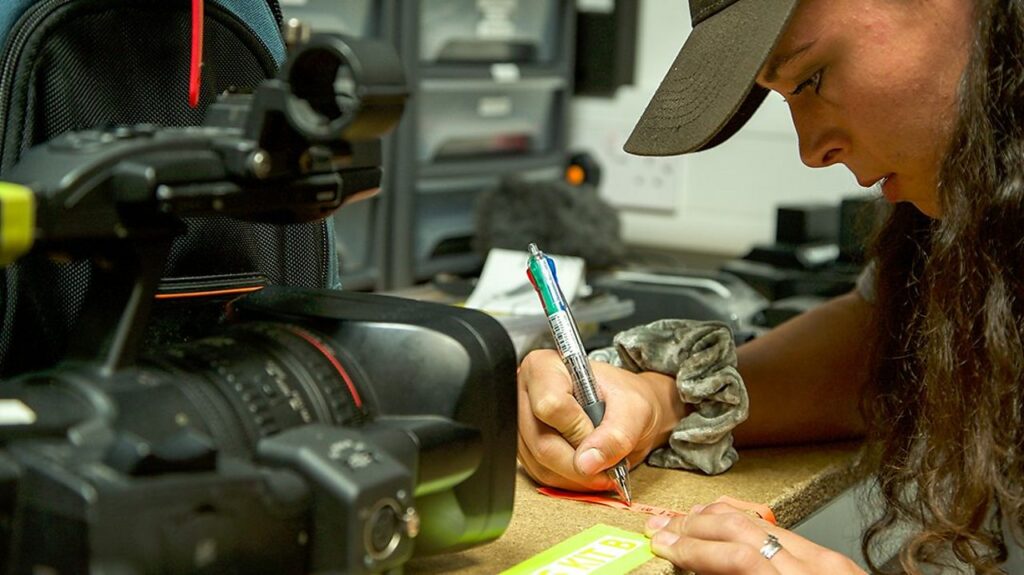Reasons to Have a Photo Booth at Your Wedding
There are so many ways to enjoy your wedding and have the memories last a lifetime. Seeing as the day flies by so fast, why not have a photo booth?
Weddings MUST be unforgettable! Together with family and friends, you’re celebrating the start of a new life together as husband and wife. You’ve got music, lighting, catering, and everything else but there seems to be something missing. There are people that enjoy dancing, people that enjoy sitting and chatting, and there are people all in between. But EVERYONE loves taking photos together especially when there are fun props involved! Every time I’ve used a photo booth, it’s brought me RIGHT back to the night of the event and I remember what a great time I had.
Here are 5 Reasons You MUST have a Photo Booth at Your Wedding:
1. Your guests recieve great wedding favors!
People don’t really enjoy wedding favors as much as they used to, so why not a photo of them and all their friends and family together in one place! People will thank you and remember this night forever!
2. You get your photos right away.
We understand that photographers may have a 3-6 week turnaround to even get a glimpse of a photo but this is a quick and easy way to get your photos with your people. Don’t wait more than 10 seconds for your high quality, silly pics with your guests!
3. Props!
Is your uncle Rob shy but wants to get in on the fun? Just slip on a Batman mask and PRESTO! Instant confidence! Plus he gets up there and participates for once!
4. This part of your event is suitable for everyone!
Have 95-year-old Nonna in a photo with 5-year-old Josie and watch the magic happen. You cannot go wrong with a photo booth. It doesn’t matter if you’ve got many kids on the guest list or no children and many seniors! Everyone loves a photo booth!
5. Add it into your guest book!
Want a fun and customizable way to create a guest book that will make you smile every time you look at it and will have everyone participating to make it special? Your guest book will be COVERED in sweet and funny pics taken by your guests with a message written below. Sometimes I’ve found that not many people write in the book because they’re not always sure what to say. Add in a photo and it’s easy and everyone will want to give it a try.

Here Are A Few Things To Consider.
How many hours do you need?
Most providers offer their services on a per hour basis. You must consider how many hours you will need. In order to do this, ask yourself the following
- How many guests will be coming?
- Do you need or want the rental the entire time?
- Do you mind if the set up takes place during the event?
For example, if someone is planning a to have a photo booth for a wedding and they anticipate 200 guests. And they need everything to be set up in advance so there are no disturbances. In this case we would suggest a four hour or longer rental time. We can help you narrow down what is right for you.
Enclosed or open concept?
An enclosed photo booth is one in which someone can sit inside and take photos. These are wonderful for those looking for something traditional. They are a bit challenging to come by and often difficult to set up. Presently we do not offer this service. We can point you in the right direction if this is something you really would like.
Open concept is more widely available. These have many benefits including,
- Allowing large group photos
- Creating a more social experience
- Easy to set up in a variety of locations
What kind of lighting will be used with the photo booth?
Not all photo booths use the same lighting techniques. There are two lighting options.
- Continuous light
- Flash
Continuous lights are in the form of led light fixtures. Basically, they are constantly on to illuminate the photo. The photos using this form of lighting are often not the best quality. We at Top Hat Photo Booths use external flash units. Flash is the way to go when taking photos. They properly illuminate everyone in the photo and create spectacular images you get to keep forever.
What kind of camera is being used with the photo booth?
This is a very important question one must ask when looking for a photo booth rental. Not all service providers use the same technology. There are two main camera options out there
- Webcam or Ipad
- Digital Single Lens Reflex (DSLR)
At Top Hat Photo Booths, we recommend DSLR cameras. These are professional level cameras. Photo quality is superb when compared to webcams or ipads. They have the functionality to handle difficult situations.
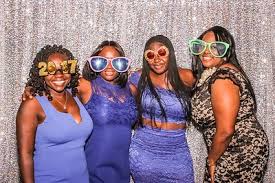
Things to Know When Renting A Photo Booth
A photo booth rental is the simplest and easiest way to elevate any entertainment atmosphere. When choosing the right company for your event, there are a few things you should consider to get the best experience possible:
1. Open Air Photo Booth or Enclosed Photo Booth: Over the years many people have asked me this question. There are pros and cons to both styles. But first, let me explain the key differences between the two–
Open Air Photo Booth: Is a single standalone unit; usually placed 6-8ft away from various open backdrops/green screens, commonly with an External DSLR Camera, Flash Strobe, Social Media Sharing, GIFs, Custom Prints, and more.
Enclosed Photo Booth: Is a stand-in unit with curtains and drapes to form a tent-like shape for guests to enter, pose, and print photos. Also known as “Vintage” or “Traditional” photo booth.
If I had to choose between the two it would be the Open-Air Photo Booth by a long shot. Here is why:
- More people can fit inside. An enclosed booth is typically 3 feet x 6 feet, which sharply limits the amount of people that can fit in a photo. While an Open-Air Booth’s footprint is around 10 feet x 10 feet.
- Less space required if you have a small space, weirdly shaped event space, or an event space that is not reachable from the ground floor. An Open-Air booth has more flexibility and versatility to adapt to different circumstances.
- Features: Most Open-Air Booths have a variety of options to receive a photo. You may want to showcase your photos immediately to your favorite social media platform, email them to yourself, or text them to a friend. Most Traditional Booths can only print.
2. Quality: There are tons of photo booth companies out there. Unfortunately, many companies miss the mark in the quality department by using cheap cameras, paper, and printers. The best way to ensure quality is to either view their sample photos on their website or ask for sample photos from past work. Lighting also plays a crucial role to determine not only the darkness or brightness but also tone, mood, and atmosphere. To be certain that you get the highest quality images inquire if lighting is provided with your rental.
3. Reviews: Reputation matters! Choose a company that has rave reviews and experience to give you reassurance you’re getting the best in the business. It’s important each event runs smoothly.
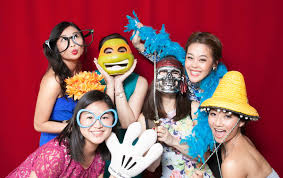
These Top Questions Will Help Ensure That You Book The Very Best Booth For Your Event.
1. Is your photo booth closed or open-air?
Broadly speaking, there are two categories of photo booths out there: closed and open-air. The first step on your journey to photo booth perfection is finding a vendor who has the style of booth you’re looking for.
Closed booths are the traditional box-style, with all elements contained within an enclosed compartment. Open-air booths, on the other hand, are made up of free-standing components, generally including a camera, a printer, and a backdrop. Closed booths offer more privacy and a smaller footprint; open-air booths offer versatility. It’s this versatility that’s made open-air booths so popular in recent years.
Open-air booths can be customized to complement any style or theme. Because you’re working outside the box, you can incorporate backdrops that range from a green screen to simple and chic curtains of color or pattern to bespoke three-dimensional installations. The free-form style of open-air booths also means that you can fit far more people in each frame than you can in a closed booth. 10 is easy, 20 isn’t unheard of.
2. What type of images does your photo booth produce?
They may be called photo booths, but booths these days can do far more than just take photos. Select your own backgrounds (a la green screen), GIFs, Boomerangs, videos, and slo-mo videos all are possible depending on the booth you select. If you want to offer one of these features at your event, make sure the booth you choose can deliver, and ask for examples. Nothing tells you about the quality of a booth like samples of previous work.
3. Is your booth Wi-Fi enabled?
Do you want guests to be able to instantly text, email, Facebook or Tweet their photos? If so, make sure you’re choosing a booth that is Wi-Fi enabled. But take caution: a Wi-Fi enabled booth is only one piece of the puzzle. Does your venue have Wi-Fi? If not, or if you don’t know, make sure that the photo booth vendor you choose is able to provide their own.
4. Do you provide booth attendants and how many?
“Yes” is the only acceptable answer to this question and 1-2 attendants is standard. From crowd control, to prop management, to troubleshooting, booth attendants are key to photo booth success. Make sure your vendor provides a trained operator who’s there to help guests enjoy their booth experience and handle any hiccups.
5. Do you provide props? What kind?
If you want to include props in your photo booth fun, it’s important to consider a vendor’s approach before you book. Prop selection and quality vary widely, so make sure to ask each vendor you interview about their take.
Some vendors are either prop-less or encourage clients to bring their own. This can be fun or daunting, depending on who you are, and either way, can add considerable cost to your budget. Other vendors lean towards 2D paper props, while still others towards 3D objects. Some provide standard prop selections, some curated, others completely customized. All these variables mean that you can end up with anything from a grab-bag of mustaches and oversized glasses, to a theme-oriented selection that helps tell the unique story of your event. Heck, there are even some photo booths that allow you to add digital props and after effects on a touchscreen after your photo is taken!
What does a typical set up look like?
There are times when a picture really is worth a thousand words. This is one of those times. Ask the vendors you interview for a picture of a typical event setup. Words like “professional,” “elegant,” and “modern” mean different things to different people; by checking out a photo of a vendor’s setup, you’ll be able to judge for yourself and decide if their style suits.
How much space do you need?
Different booths, different setups, different space requirements. Will the booth you’re considering fit in your venue and in the location you envisioned? It’s important to find out the setup dimensions for each booth you vet, including height.
If you’re planning an outdoor event, make sure to ask about any special requirements a vendor may have. As with other types of electronic equipment, photo booths need to remain within a specific temperature range to work properly and must be protected from the elements. Many booth operators require some form of overhead covering and a solid backing behind backdrops since direct sunlight is not great for photos and backdrops can become giant sails in the wind.
